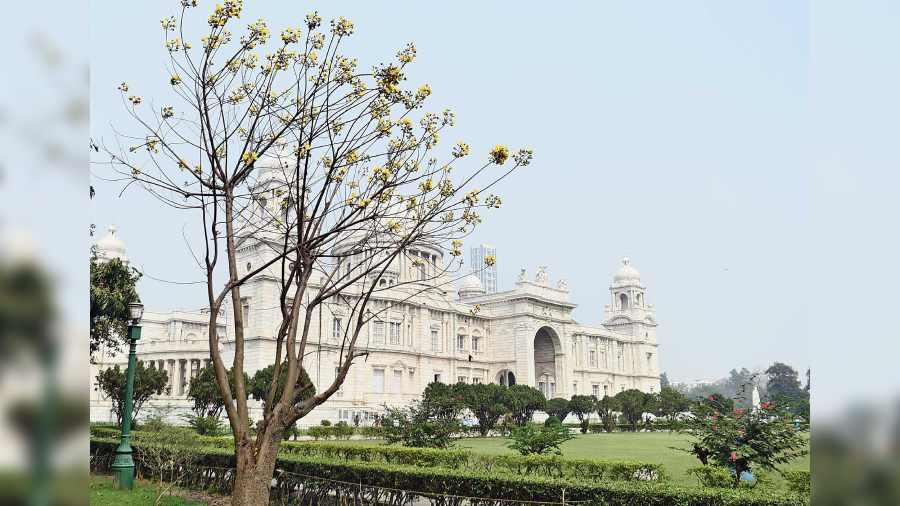A bio-diversity micro hotspot is flourishing right in the heart of the city. With over a thousand trees and nearly 60 species in its 64-acre garden, the Victoria Memorial Hall (VMH) garden is home to an array of exotic and rare flora and fauna.
The authorities, who conducted a tree census, are now going to start a nature walk for students and the general public to spot some of these. The nature trail will kick off on March 7 and will be conducted every Monday.
The hour-long walk will help visitors see and learn about the rare trees and flowers, from where they were brought and when they were planted.
It will also focus on the fauna flourishing in the greenery — butterflies, birds, civets, mongoose and other animals. Nature enthusiast Susmita Bose of the Beats of Nature Society, who has been studying the flora and fauna at Victoria, will take visitors around the garden.
To join the trail, one has to first register. The VMH authorities have decided to limit the participation to 25 persons for each walk.
Basu had earlier conducted the tree census in the garden and prepared a biodiversity report. According to the report, there are 1,162 trees in the garden. The VMH authorities plant around 60-70 trees each year.
Basu writes in the report: “The garden around Victoria Memorial was conceptualised around a 100 years ago by Sir David Prain, a physician and a botanist and Lord Redesdale, an amateur horticulturist so as to enhance the setting of the Memorial building and to provide a relaxed atmosphere for the visitors. The garden has, particularly in recent times, served as a sanctuary of fauna in the middle of metropolis. The setting is somewhat formal in the vicinity of the Memorial building, particularly in front of the entrances in the north and the south. The rest of the garden is somewhat informal with seats nestling in the shade of the trees and in a direction so as to afford an unhindered view of the memorial.”
Among the rare fauna, she lists four baobab trees, a breadfruit tree, an elephant ear tree, four rudraksha trees and many more.
Basu noted strangulation of many rare trees by the common ficus tree, a phenomenon rampant in tropical areas. She suggests keeping an eye out for such ficus seedlings and uprooting them to prevent the death of rare trees.
“All trees will get name tags, where the scientific name along with a short description will be provided. This should be in place in six months,” said VMH curator Jayanta Sengupta.
“The VMH garden was considered to be ornamental. Its rich biodiversity was never really explored. During the study of the report, we discovered that the tree trunks in the garden had mushroom-like fungus. This fungal growth known as lichen happens when oxygen quality is good,” said Sengupta, who is excited about showcasing the assets in the garden.
The authorities will publish a book documenting the flora and fauna in the garden.
